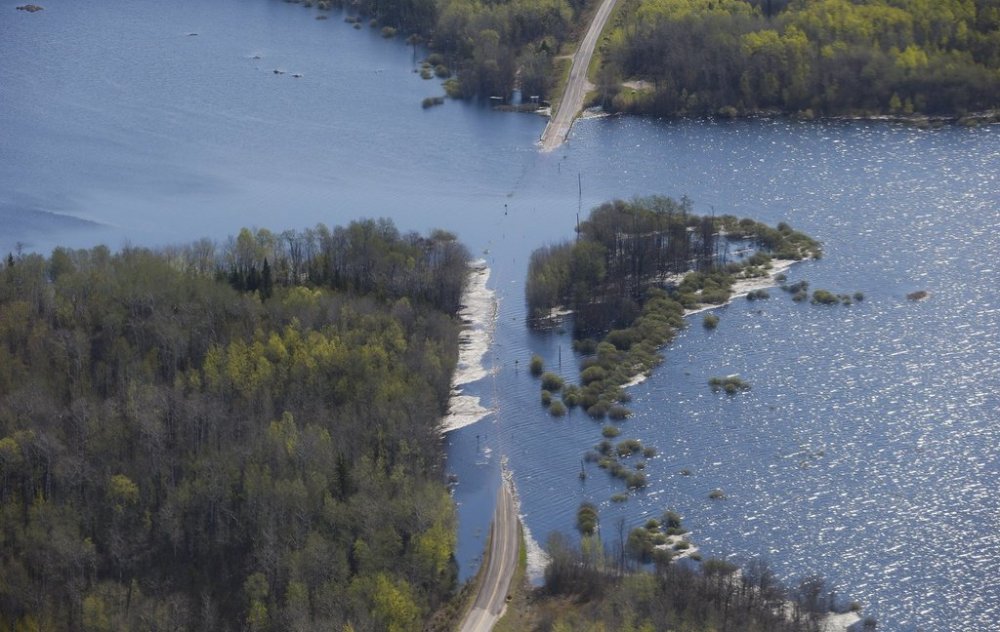Designs for Manitoba flood prevention project to be completed this spring: minister
Advertisement
Read this article for free:
or
Already have an account? Log in here »
We need your support!
Local journalism needs your support!
As we navigate through unprecedented times, our journalists are working harder than ever to bring you the latest local updates to keep you safe and informed.
Now, more than ever, we need your support.
Starting at $15.99 plus taxes every four weeks you can access your Brandon Sun online and full access to all content as it appears on our website.
Subscribe Nowor call circulation directly at (204) 727-0527.
Your pledge helps to ensure we provide the news that matters most to your community!
To continue reading, please subscribe:
Add Brandon Sun access to your Winnipeg Free Press subscription for only
$1 for the first 4 weeks*
*$1 will be added to your next bill. After your 4 weeks access is complete your rate will increase by $4.99 a X percent off the regular rate.
Read unlimited articles for free today:
or
Already have an account? Log in here »
Hey there, time traveller!
This article was published 21/03/2025 (197 days ago), so information in it may no longer be current.
WINNIPEG – The Manitoba government expects new designs of a long-promised flood prevention project will be completed later this year after the province asked the federal government to pause environmental assessments to address concerns from local First Nations.
The Lake Manitoba and Lake St. Martin outlet channels project was featured heavily in the NDP government’s latest budget released Thursday.
The spending plan outlines the province’s commitment of $809 million for various infrastructure projects, including building the two channels.

“A substantial amount of that money is for the ongoing consultation work,” Transportation and Infrastructure Minister Lisa Naylor said in an interview Friday.
The current design would have two large outlet channels built to drain water from Lake Manitoba into Lake St. Martin and then into Lake Winnipeg. The new design could include alternatives that would address concerns from communities and the federal government.
Nearby First Nations have long called for meaningful consultation on the project, previously saying the previous Progressive Conservative government failed to do so. Communities have said traditional land and sacred sites could be impacted.
The federal government sided with First Nations last June. The Impact Assessment Agency has said the project’s environmental effects could be addressed, but it would have a significant impact on Indigenous land use.
The federal minister said he would refer the issue to cabinet for a decision.
The province asked to put a pause on that process to work with communities.
“With 40 different communities affected, there’s an enormous amount of work that’s been going on to address their environmental concerns, as well as concerns related to traditional land use and sacred sites,” said Naylor.
Final designs are slated to be completed by this spring, but First Nations have yet to sign off.
“Everybody wants to be on the same page when it comes to the channels,” said Cornell McLean, chair of the Interlake Reserves Tribal Council and chief of Lake Manitoba First Nation.
“The Manitoba government seems sincere about trying to work with us, but we haven’t seen the fruits of that labour yet.”
The Interlake chiefs and the province are in the process of signing a memorandum of understanding that address some concerns from the federal government and communities.
Naylor wouldn’t say what the document may include.
The project has been talked about for more than a decade, following severe flooding in 2011 that forced thousands of people from their homes.
The former Progressive Conservative government promised in 2016 to build the project quickly but butted heads for years with federal regulators and nearby First Nations who called for more consultation with the communities that would be affected.
In 2022, a judge ruled the government did not consult properly before setting up a right of way on Crown land for preparatory work, such as groundwater monitoring.
McLean said he wasn’t surprised to see the project is top of mind for the provincial government, but added it needs to follow through on its commitment to work with communities.
“At this point, we’re agreeable to helping…but they need to honour their agreements too.”
The province estimates that once approved, the project could take three to four years to complete.
This report by The Canadian Press was first published March 21, 2025.
